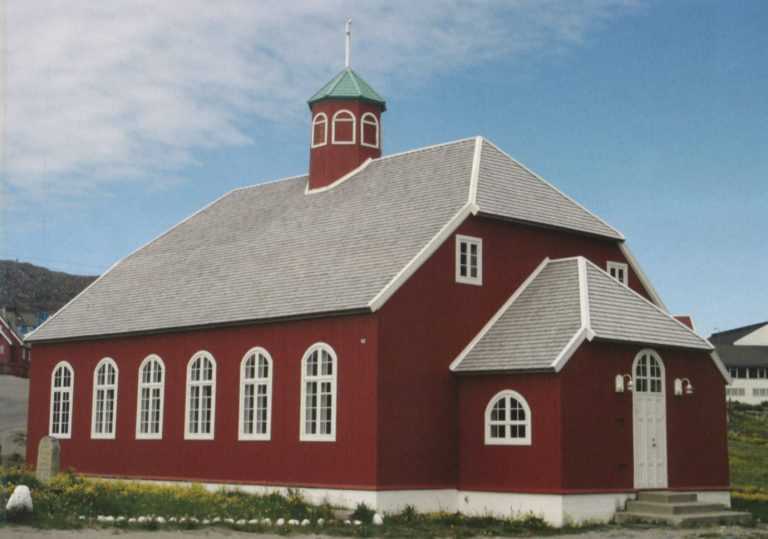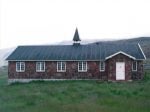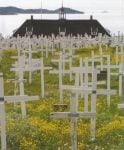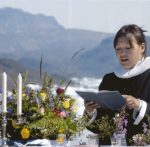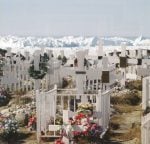Christianity was introduced to South and Central Greenland in the Norse period around 1000AD which provided the occasion for holding the millennium church service on the ruins of the old bishop’s seat in Gardar/lgaliku in South Greenland. However, from then until the Northmen (Nordboer) disappeared, we have been able to follow the Greenlandic mission and church history from 1721 with the arrival of Hans Egede – termed Greenland’s apostle – on Hábets 0 (Hope’s Island).
The goal of Hans Egede’s journey was to search out the Northmen which he knew had immigrated during the Norse period. He quickly learned that the Northmen had disappeared. He therefore began his missionary work amongst the Eskimos. In 1733 the
Moravian Brotherhood (the Hermhutt) mission began their missionary work in and there quickly developed opposition between the two missions both regarding theological issues and missionary strategy. The Moravian Brotherhood have had great influence in spiritual and church life, visibly noticeable in our hymns and song traditions.
Before 1905, when the Church and School Systems Law in Greenland was enacted, the missionary work and trade – and thus also colonization – walked hand in hand and all of Greenland with the exception of Thule and East Greenland had converted to Christianity and was colonized.
With a change in the constitution in 1953, Greenland acquired status as a region and when the home rule ordinance went into effect in 1979, the church was the first area to be appropriated – the national deanery position was replaced by a vice bishop still under Copenhagen’s diocese. After several years’ negotiations Greenland became an independent diocese within the Danish National Church. The Church Law in Greenland supported the desire to maintain the Greenlandic church’s relationship with the Danish National Church. On the basis of this law the Landsting completed a federal ordinance for the church which established legal and administrative responsibilities under the executive branch jurisdictions for culture, education, church and research while ecclesiastical supervision was as mentioned placed with the bishop.
The church of Greenland is divided into 17 parishes with boundaries which coincide with municipal boundaries. In each parish there should be at least one priest. In addition, a priest for those who speak Greenlandic is located in Denmark. Unfortunately, some of the parishes have had to do without a priest because of the lack of priests in Greenland. The daily administration is taken care of by three deanery offices which are located in llulissat, Nuuk and Qaqortoq. Each of the parishes varies in size and population and several of the parishes have – in addition to a main city – several settlements (one of them has nine settlements which is served by only one priest visiting two to four times a year). In the settlements the daily churchly services including Sunday services are met by catechists. In the deanery cities a Danish speaking priest takes care of the Danish speaking portion of the congregation. The catechist takes care of the Eucharist and the Holy Communion, baptisms, burials and the preparations for confirmations. Attending the alter and marriages are not covered by the catechists work.
By far, the largest portion of the population are members of the Church of Greenland, the evangelical Lutheran church. It can be said that Greenlanders have been very faithful to the Church and not only at high services and holy days but also for family gatherings where attendance at church is natural. In this manner it can be said that the Church is a natural part of and not a foreign element in daily activities despite the many social problems with alcohol, violence, neglect and so on; this precisely because the Church maintains an “open door” policy. Despite these problems the Church’s message of a forgiving and loving God gives courage and strength to conquer daily tests.
Greenlanders have a very heartfelt faith and are therefore more pious than, for example, the Danes. This finds expression in hymn singing traditions. Greenlanders utilize most gatherings to sing and every society has its own choir which sings in the church at holy day festivals which then naturally finds expression in many other situations.

